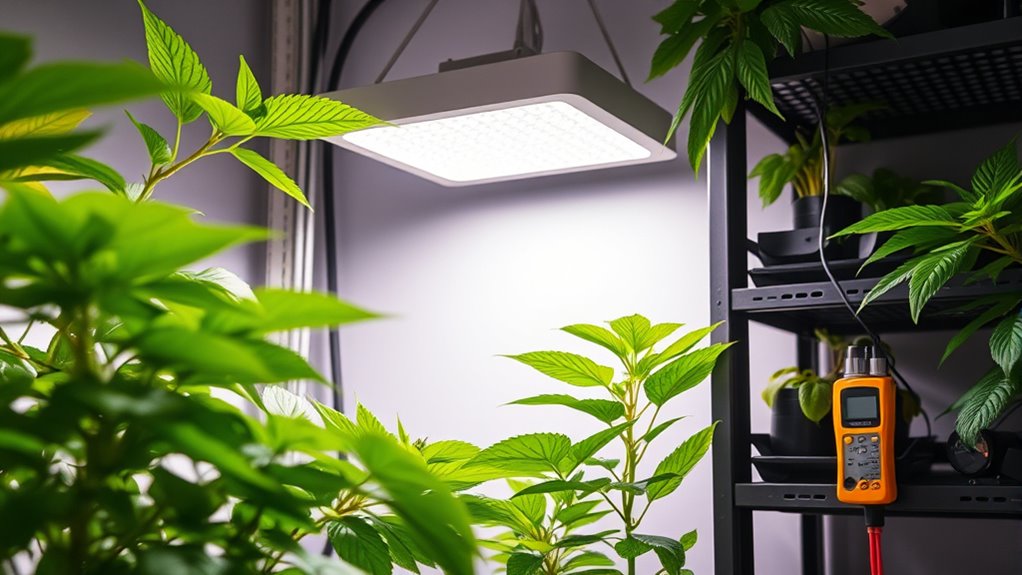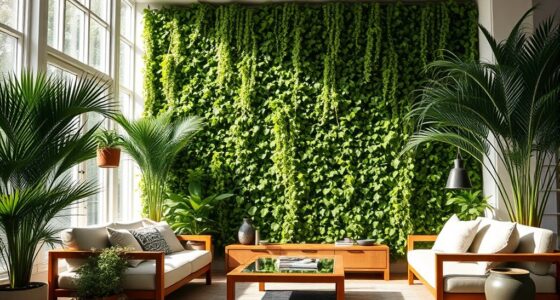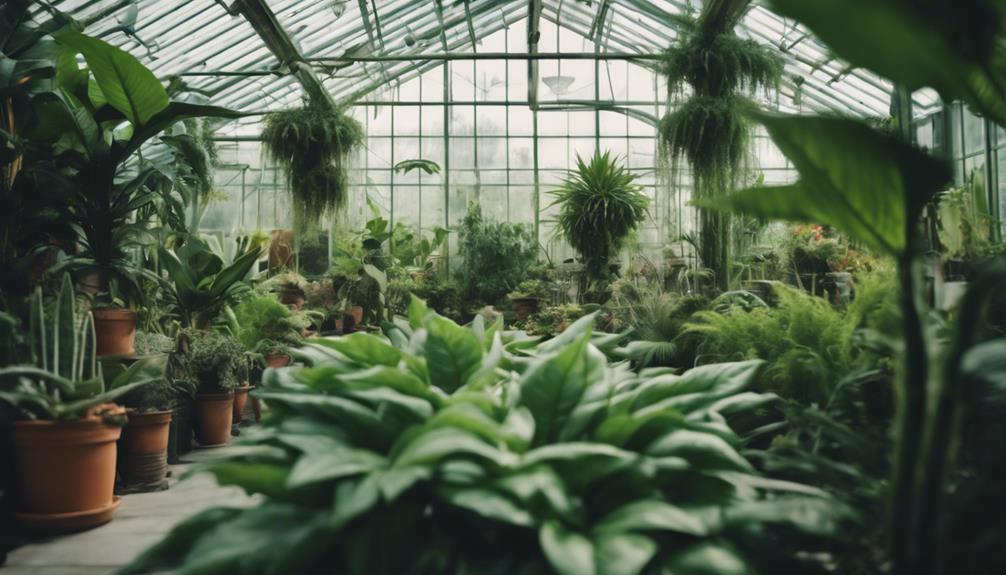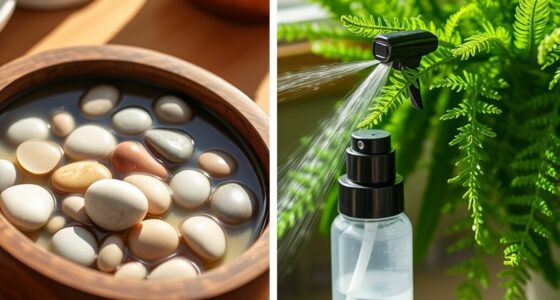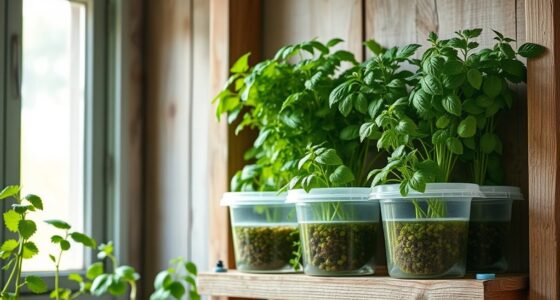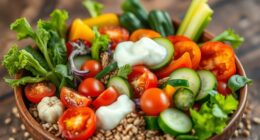To optimize your grow lights, understanding lumens, PAR, and placement is key. Lumens measure brightness but don’t reflect useful light for plants. PAR (Photosynthetically Active Radiation) directly indicates the light spectrum plants use for photosynthesis—higher PAR means better growth. Proper distance from plants prevents light burn or weak coverage. Balancing these factors guarantees healthy growth and yields. Keep exploring to master how to fine-tune your setup for the best results.
Key Takeaways
- Lumens measure visible brightness, but PAR (Photosynthetically Active Radiation) better indicates light usable by plants.
- PAR values focus on specific wavelengths (400-700 nm) crucial for photosynthesis, unlike lumens.
- Proper light placement ensures optimal intensity and coverage, preventing light stress or weak growth.
- Adjusting light distance based on plant stage maximizes efficiency and healthy development.
- Consider spectrum and intensity alongside placement for balanced, effective grow light setups.
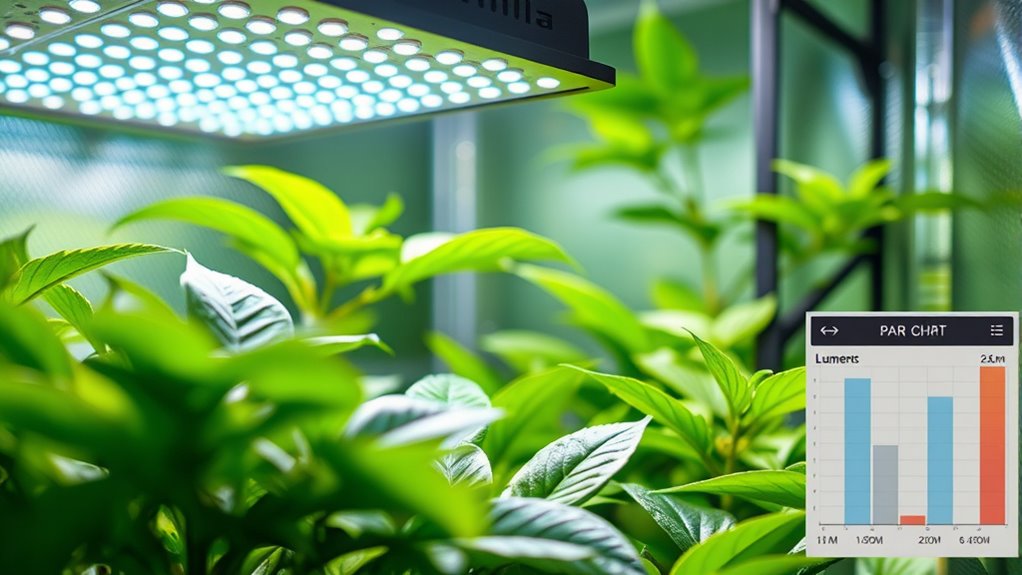
Grow lights are indispensable tools for indoor gardening, helping plants thrive where natural sunlight is limited or unavailable. To maximize their effectiveness, understanding the role of LED spectrum and light intensity is essential. The LED spectrum refers to the range of light wavelengths emitted by your grow light. Different plants and growth stages require specific spectra to grow ideally. For instance, blue light promotes vegetative growth, while red light encourages flowering and fruiting. When selecting a grow light, guarantee it offers a full spectrum or a tailored spectrum that matches your plant’s needs. This guarantees your plants receive the right signals for healthy development.
Grow lights emit specific light spectra; choose full or tailored spectra for healthy plant development.
Light intensity, on the other hand, determines how much light your plants receive. It’s a measurement of the energy delivered to the plant canopy. Adequate light intensity is critical because, without it, plants won’t photosynthesize efficiently, stunting their growth or leading to weak, leggy plants. As you set up your grow light, pay close attention to the light’s intensity, which can be adjusted through the height of the light fixture or by choosing models with adjustable settings. The goal is to provide enough light without causing stress or damage. Too little light results in slow growth, while too much can cause light burn or heat stress.
Your choice of LED spectrum and light intensity directly influences your plants’ health and yield. Properly calibrated, your grow light will deliver targeted wavelengths and sufficient energy to support each stage of development. Keep in mind that different plants and even different growth phases require different light levels. For seedlings, lower intensity is sufficient, but as plants mature, you’ll need to increase light output to support robust growth and flowering. Regularly monitor your plants for signs of light deficiency, such as stretching or pale leaves, and adjust your light setup accordingly.
Positioning your grow light correctly is also key. Keep the light at an appropriate distance from the plant canopy to prevent overheating or insufficient coverage. Typically, LED grow lights can be placed closer than traditional lights due to lower heat emission, but always follow the manufacturer’s guidelines. Additionally, understanding light pollution and its effects can help you optimize your indoor setup and reduce unnecessary light spillage that might affect neighboring spaces or plants. By balancing LED spectrum, light intensity, and proper placement, you’ll give your indoor garden the best chance to flourish. With thoughtful adjustments and a clear understanding of these factors, you’ll optimize growth and maximize your harvest, turning your indoor space into a thriving green oasis.
Frequently Asked Questions
How Do Different Light Spectrums Affect Plant Growth?
Different light spectrums substantially influence plant response. Blue light encourages vegetative growth, helping plants develop strong leaves and stems, while red light promotes flowering and fruiting. A balanced light spectrum ensures healthy plant development throughout various growth stages. You’ll notice plants respond best when they receive the right mix of wavelengths, optimizing growth, flowering, and overall health. Adjusting the light spectrum based on your plant’s needs can lead to better yields and healthier plants.
Can Grow Lights Be Used Outdoors Effectively?
Yes, you can use grow lights outdoors effectively, especially when natural sunlight isn’t enough. They supplement outdoor sunlight, helping plants thrive in low-light conditions or during cloudy days. Plus, using grow lights can aid pest management by discouraging pests that prefer dark, shaded areas. Just make certain you choose the right spectrum and placement, and monitor how your plants respond to balance artificial and natural light for ideal growth.
What Is the Ideal Duration for Using Grow Lights Daily?
Think of your grow lights as the sun’s guiding hand for your plants. You should aim for a consistent light cycle, typically 12-16 hours daily, to nurture healthy growth. Too much light can stress your plants, while too little hampers development. By sticking to this routine, you guarantee your plants get the right amount of energy, promoting vibrant health and lush growth every step of the way.
Are LED Grow Lights More Energy-Efficient Than HID Lights?
You’ll find that LED grow lights are more energy-efficient than HID lights, meaning they use less energy to produce the same or even better light quality. This results in lower energy consumption and significant cost savings over time. Plus, LEDs generate less heat, reducing cooling costs. So, switching to LED grow lights helps you save money while providing ideal light for your plants’ growth.
How Do Temperature and Humidity Impact Grow Light Effectiveness?
Temperature and humidity effects critically influence grow light effectiveness. High temperatures can cause lights to overheat, reducing their lifespan and efficiency, while low temperatures may limit plant growth. Humidity influence affects transpiration and nutrient uptake, impacting how well plants respond to grow lights. Maintaining ideal temperature and humidity levels ensures your grow lights work effectively, promoting healthy plant development and maximizing yields. Always monitor and adjust environment conditions for best results.
Conclusion
Understanding lumens, PAR, and proper placement can boost your plant growth markedly. Did you know that plants need around 200-400 micromoles of PAR light daily to thrive? By choosing the right grow lights and positioning them correctly, you optimize this essential energy. Remember, the right light setup isn’t just about brightness—it’s about delivering the right spectrum and intensity at the right distance. With these insights, you’re well on your way to healthier, more productive plants.
